Mastering Boston Video Production: Top Techniques for Exceptional Results
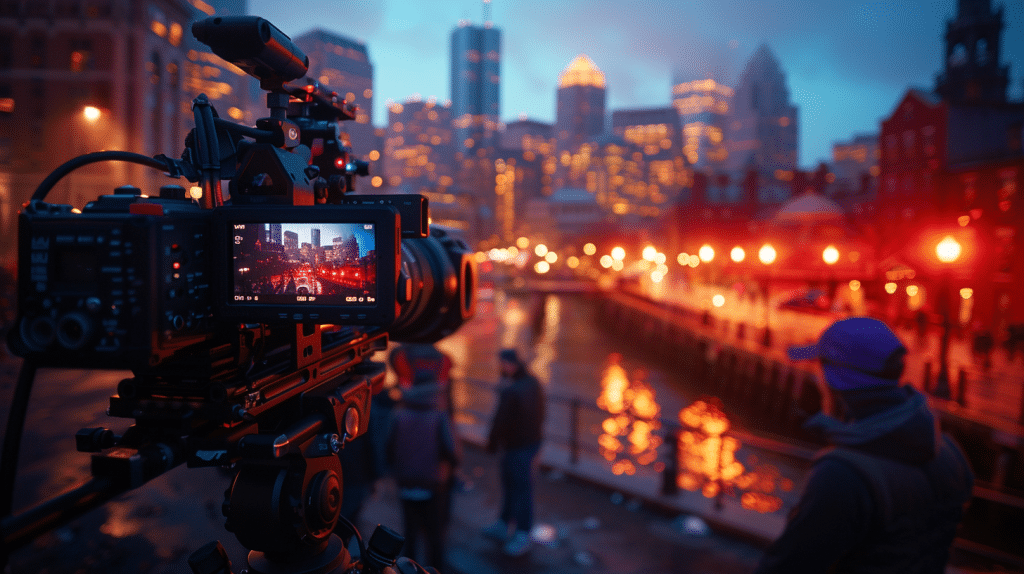
Boston is a city known for its rich history and vibrant culture, making it an ideal backdrop for compelling video productions.
To truly stand out in this competitive landscape, mastering advanced video production techniques is essential.
From strategic lighting and precise audio capture to dynamic camera movements and meticulous color grading, each aspect plays a crucial role in enhancing the quality and impact of your videos.
This guide delves into the best Boston video production techniques, offering insights into how each element contributes to creating top-tier content that captivates and engages your audience.
Explore these methods to elevate your storytelling and produce visually stunning, high-quality videos.
Table of Contents
Lighting Techniques
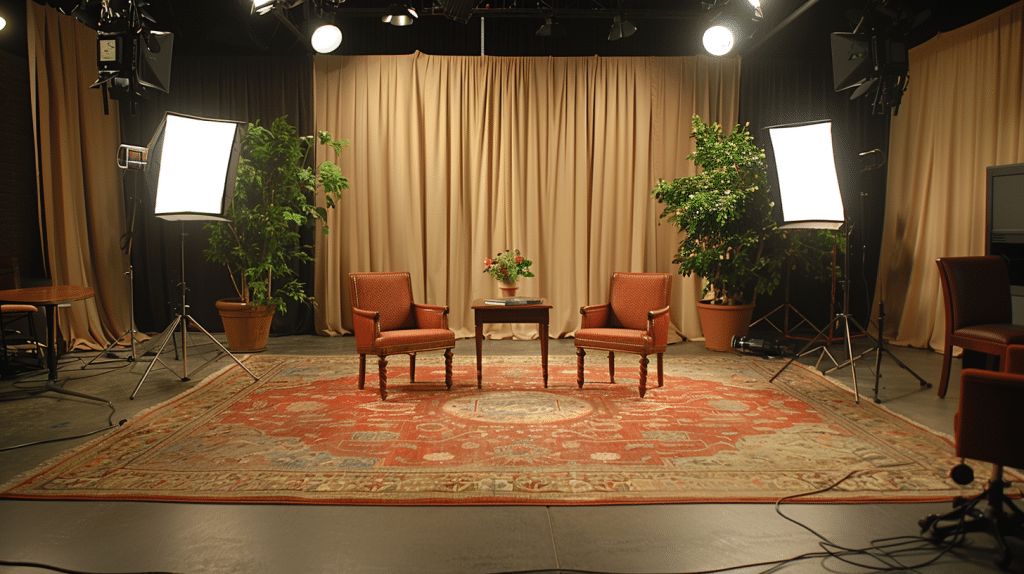
When setting up your Boston video production, utilize proper lighting techniques to enhance the visual quality of your footage.
Lighting plays an important role in how your video will look on screen, so it’s vital to get it right.
Start by positioning your lights strategically to avoid harsh shadows or overexposure. Soft, diffused light is often the most flattering for subjects, creating a more professional and polished look.
Experiment with different types of lighting setups to see what works best for your specific project.
Whether you’re aiming for a bright and vibrant aesthetic or a moody and dramatic feel, the right lighting can make all the difference. Remember to take into account the color temperature of your lights as well, as it can impact the overall mood of your video.
Don’t forget about natural light too!
If possible, try to shoot during the golden hours of sunrise or sunset for a warm, soft glow that can add depth and dimension to your footage.
By mastering lighting techniques, you can elevate your Boston video production to the next level and captivate your audience with visually stunning content.
Audio Capture
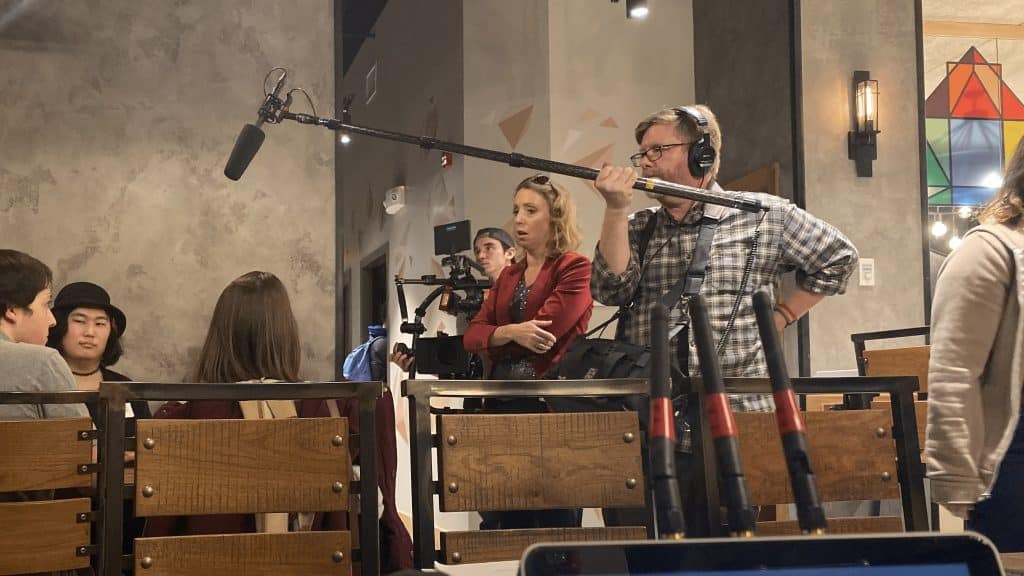
To guarantee high-quality audio for your Boston video production, focus on mastering effective audio capture techniques. Start by selecting the right microphone for the job.
A shotgun mic works well for capturing sound from a specific direction, while lavalier mics are great for hands-free operation.
Make sure to position the microphone close to the sound source to reduce background noise.
Additionally, using a windscreen or pop filter can help eliminate unwanted sounds like wind or plosives.
Check your audio levels before recording to avoid distortion or clipping. Test your equipment in the actual filming location to identify and address any potential audio issues beforehand.
Consider using headphones during recording to monitor the audio quality in real-time.
After recording, use audio editing software to clean up any background noise or inconsistencies in volume. Adjust the audio levels to guarantee clear sound throughout your video.
Storyboarding Methods
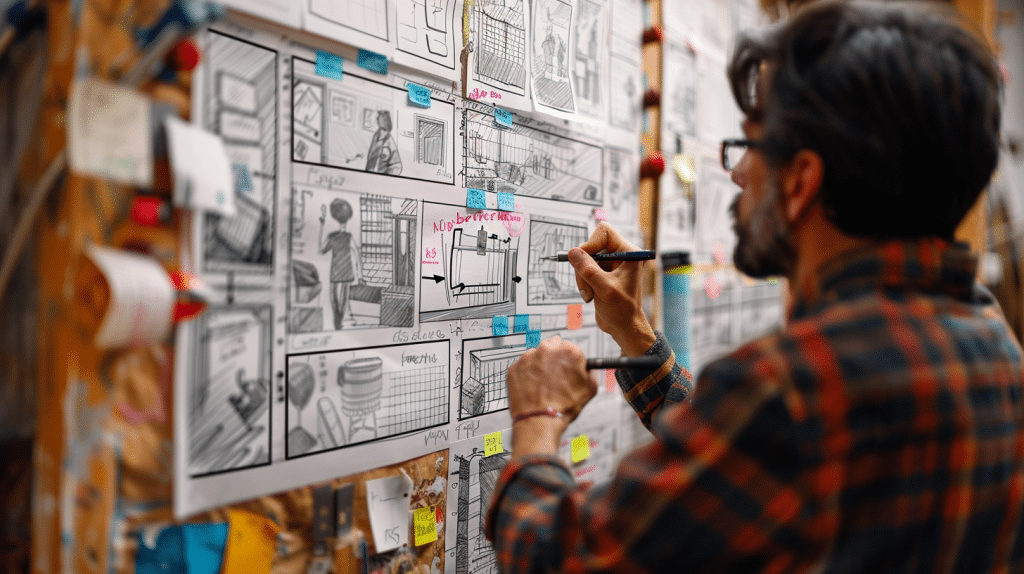
For effective planning and visualization of your Boston video production, consider utilizing various storyboard methods to outline your shots and sequences.
Storyboarding helps you map out the visual components of your video, ensuring a smooth production process.
One popular method is the traditional storyboard, where you sketch out each frame to represent different shots. This method provides a clear visual reference for the scenes you want to capture.
Another useful technique is the digital storyboard, which allows you to create detailed visual representations using software or online tools.
This method offers flexibility in editing and rearranging your shots before filming, saving you time and effort during the production phase.
Furthermore, animatics, a dynamic storyboard method, add movement and timing to your visuals, giving you a preview of how the final video will flow.
By incorporating these storyboard methods into your video production process, you can effectively plan and communicate your vision to your team, ensuring a successful outcome for your Boston video project.
Camera Movement
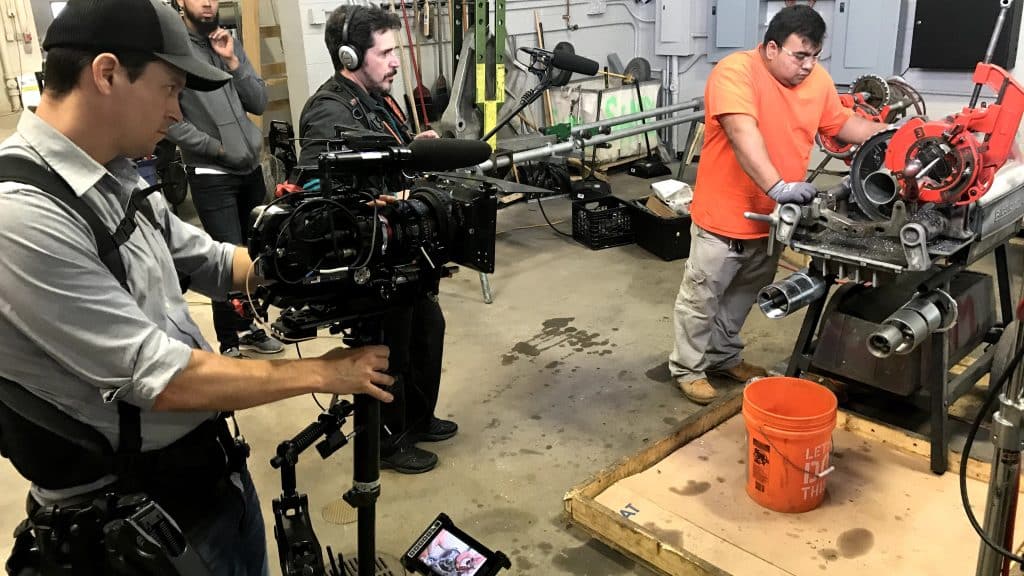
Consider how camera movement can enhance the visual storytelling in your Boston video production, adding depth and dynamics to your shots.
Camera movement is a powerful tool that can greatly impact the mood and atmosphere of your video. By incorporating techniques such as pans, tilts, zooms, and tracking shots, you can create a more immersive experience for your viewers.
Panning involves moving the camera horizontally from left to right or vice versa, allowing you to smoothly follow action or reveal new elements in your scene.
Tilt shots, on the other hand, move the camera up or down, adding a sense of perspective and drama.
Zooming can bring focus to a specific subject or create a sense of intimacy.
Tracking shots, where the camera physically moves through space, can add energy and excitement to your visuals.
Experimenting with different camera movements can help you convey emotion, highlight important details, and keep your audience engaged.
When used thoughtfully, camera movement can elevate the overall quality of your Boston video production.
Color Grading Tips
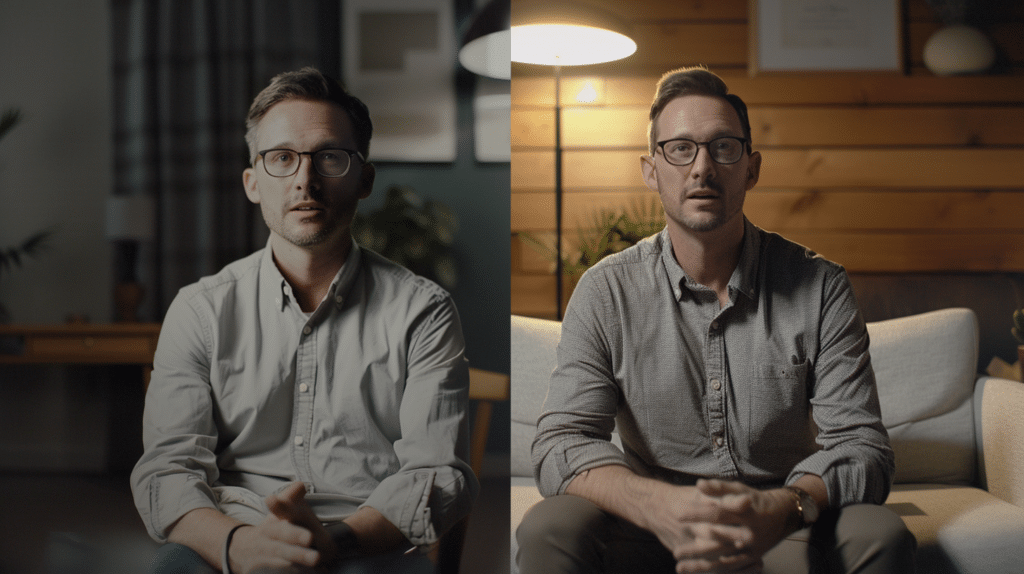
Improving your Boston video production with efficient color grading can greatly impact the overall look and feel of your visuals.
When it comes to color grading, consistency is key.
Start by establishing a color palette or mood board to guide your color choices throughout the video. This will help create a cohesive look and evoke the desired emotions from your audience.
Another essential tip is to pay attention to skin tones. Ensuring that skin tones look natural and flattering can significantly enhance the overall quality of your video.
Use color grading tools to adjust the hue, saturation, and luminance of skin tones to achieve a more polished and professional appearance.
Additionally, don’t forget about contrast and exposure. Properly balancing the contrast and exposure levels in your video can make a world of difference.
Play around with these settings to highlight important elements and create visual interest.
Lastly, remember that less is often more when it comes to color grading.
Avoid over-saturating or over-editing your footage, as this can detract from the overall impact of your visuals.
Stick to subtle adjustments that enhance the natural beauty of your shots.
Editing Tricks
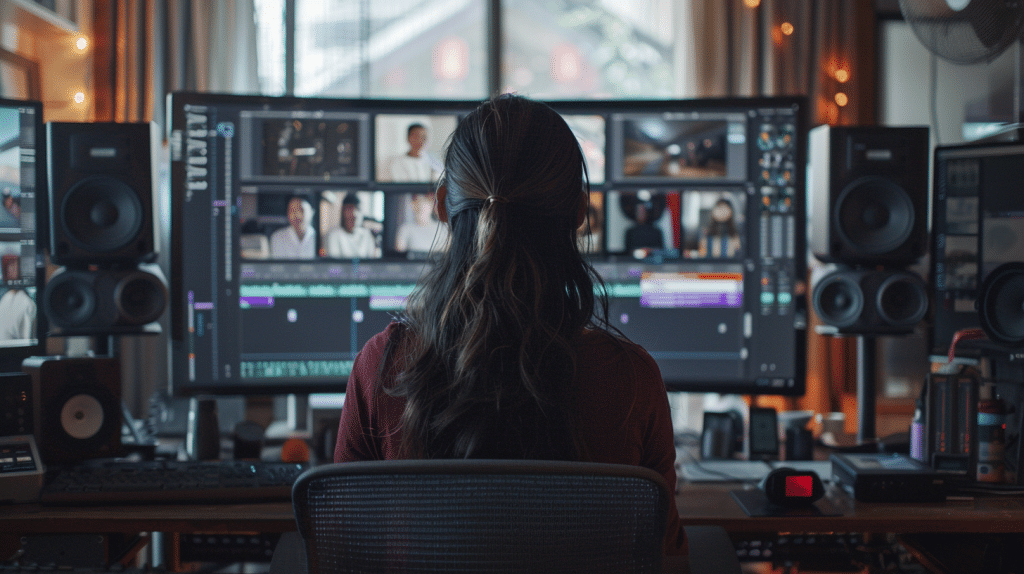
To amplify the impact of your Boston video production, incorporate clever editing tricks that captivate your audience and elevate the storytelling experience.
One effective editing trick is jump cuts, which can create a sense of urgency or highlight key moments by quickly shifting between shots.
You can also use match cuts to seamlessly connect different scenes or shots based on similar visual or auditory elements, providing a smooth and engaging viewing experience.
Another powerful editing technique is the use of montage sequences, where a series of short shots are edited together to condense time, convey information efficiently, or evoke specific emotions.
Consider incorporating creative transformations like fades, dissolves, or wipes to add polish and professionalism to your video.
Experiment with varying the pace of your edits to build tension, create rhythm, or emphasize important points.
Additionally, don’t underestimate the impact of sound editing – adding sound effects or adjusting the audio levels can greatly enhance the overall viewing experience.
Scriptwriting Strategies

When crafting your script for Boston video production, prioritize clarity and emotional connection to engage viewers effectively.
Here are four scriptwriting strategies to enhance your video content:
- Know Your Audience: Tailor your script to resonate with the specific demographics, interests, and preferences of your target viewers.
- Create a Compelling Storyline: Develop a narrative that captivates the audience from the beginning and keeps them invested until the end.
- Focus on Authentic Dialogue: Write natural-sounding conversations that feel genuine and help viewers connect with the characters or message.
- Include Clear Calls to Action: Guide your viewers on what steps to take next, whether it’s visiting a website, subscribing to a channel, or sharing the video with others.
Equipment Selection

Selecting the appropriate equipment plays a pivotal role in guaranteeing the quality and effectiveness of your Boston video production.
When choosing cameras, consider factors like resolution, frame rate, and low-light performance to make sure crisp, high-quality footage.
Opting for a tripod or stabilizer can help eliminate shaky shots, giving your videos a polished and professional look.
High-quality microphones are essential for capturing clear audio, so investing in a shotgun or lavaliere microphone can greatly enhance the overall production value.
Lighting equipment is essential for achieving the desired ambiance and visibility in your videos.
Softboxes or LED panels can help control lighting intensity and create a visually appealing environment for your shoots.
Additionally, using a green screen can open up a world of possibilities for creative backgrounds and special effects during post-production.
Set Design

Enhance the visual appeal and storytelling of your Boston video production through strategic set design decisions.
Set design plays an important role in creating the atmosphere and conveying the message of your video.
Here are four key elements to ponder when designing your video set:
- Purposeful Props: Select props that enhance the narrative and provide context to the scene. Each prop should serve a specific role in advancing the story or character development.
- Color Palette: Choose a color scheme that complements the mood and theme of your video. Colors can evoke emotions and help convey the message more effectively.
- Spatial Arrangement: Ponder the layout of your set to optimize camera angles and create visual interest. The arrangement of furniture, props, and actors can impact how the audience perceives the scene.
- Lighting Design: Lighting is essential for setting the tone and highlighting key elements in your video. Experiment with different lighting techniques to create depth and add visual appeal to your set.
Post-Production Secrets
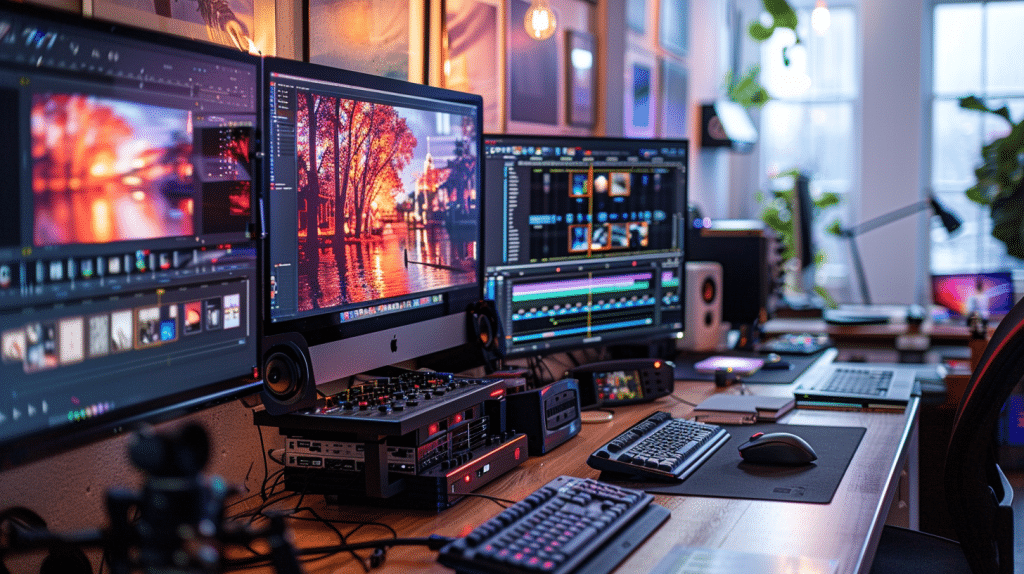
To enhance the impact of your Boston video production, consider incorporating expert post-production techniques that can improve the overall quality and storytelling of your content.
One key post-production secret is detailed editing. Trim unnecessary footage, add changes, and fine-tune the pacing to keep viewers engaged.
Additionally, color grading can greatly impact the mood and tone of your video. Adjusting colors and tones can create a cohesive look and evoke specific emotions from your audience.
Including high-quality sound design is another essential element. Enhance audio clarity, add background music or sound effects, and make sure that the audio complements the visuals seamlessly.
Utilizing visual effects sparingly and effectively can elevate your video to the next level. Whether it’s adding text overlays, graphic elements, or subtle enhancements, these effects can boost the overall production value.
Finally, don’t underestimate the power of a compelling storyline. A well-crafted narrative can captivate viewers and leave a lasting impression.
Frequently Asked Questions
How can strategic lighting enhance my Boston video production?
Strategic lighting is crucial in video production as it significantly impacts the visual quality of your footage.
Proper lighting techniques help eliminate harsh shadows and overexposure, ensuring that your subjects are well-lit and appear professional on screen. Utilizing diffused light can create a soft, flattering effect, enhancing the overall aesthetic of your video.
Additionally, understanding the color temperature of your lights allows you to set the desired mood, whether it’s a warm, inviting atmosphere or a cool, dramatic tone.
By mastering lighting, you can create depth, highlight key elements, and ultimately captivate your audience with visually stunning content.
What are the best practices for capturing high-quality audio in video production?
High-quality audio is essential for producing professional videos, and it starts with selecting the right microphone for your needs.
Shotgun mics are ideal for directional sound capture, while lavalier mics are great for hands-free operation. Positioning the microphone close to the sound source helps minimize background noise.
Additionally, using windscreen or pop filters can reduce unwanted sounds like wind or plosives. Monitoring audio levels before recording ensures clear sound without distortion.
During filming, wearing headphones allows real-time audio quality checks.
Post-production audio editing further enhances sound clarity and consistency, making sure your video’s audio is as polished as its visuals.
Why is storyboarding important in video production, and what methods can be used?
Storyboarding is a vital step in the pre-production process as it helps plan and visualize your video, ensuring a smooth production.
Traditional storyboards involve sketching each frame, providing a clear visual reference for your shots. Digital storyboards offer flexibility, allowing easy edits and rearrangements using software or online tools.
Animatics add movement and timing to your visuals, giving a preview of the final video’s flow.
These methods help communicate your vision to the production team, organize your shoot, and anticipate potential challenges, leading to a more efficient and successful video production process.
How does camera movement enhance visual storytelling in video production?
Camera movement adds depth and dynamics to your video, enhancing the storytelling experience.
Techniques like pans, tilts, zooms, and tracking shots can create a more immersive experience for viewers. Panning follows action smoothly, while tilting adds perspective and drama. Zooming focuses on specific subjects, creating intimacy, and tracking shots add energy by moving through space.
Thoughtful camera movements can convey emotions, highlight important details, and maintain viewer engagement.
By experimenting with different techniques, you can elevate your video’s visual quality and make your storytelling more compelling and impactful.
What are the key considerations for effective color grading in video production?
Color grading significantly impacts the overall look and feel of your video.
Consistency is crucial, so establishing a color palette or mood board helps maintain a cohesive visual style.
Attention to skin tones ensures natural and flattering appearances, enhancing the video’s professionalism.
Adjusting contrast and exposure highlights important elements and adds visual interest.
Subtle adjustments are often more effective than over-saturation, preserving the natural beauty of your shots.
Proper color grading can evoke specific emotions, reinforce the narrative, and elevate the overall quality of your video, making it more appealing and engaging for your audience.
Share:
Search our blog:
Follow us on:
